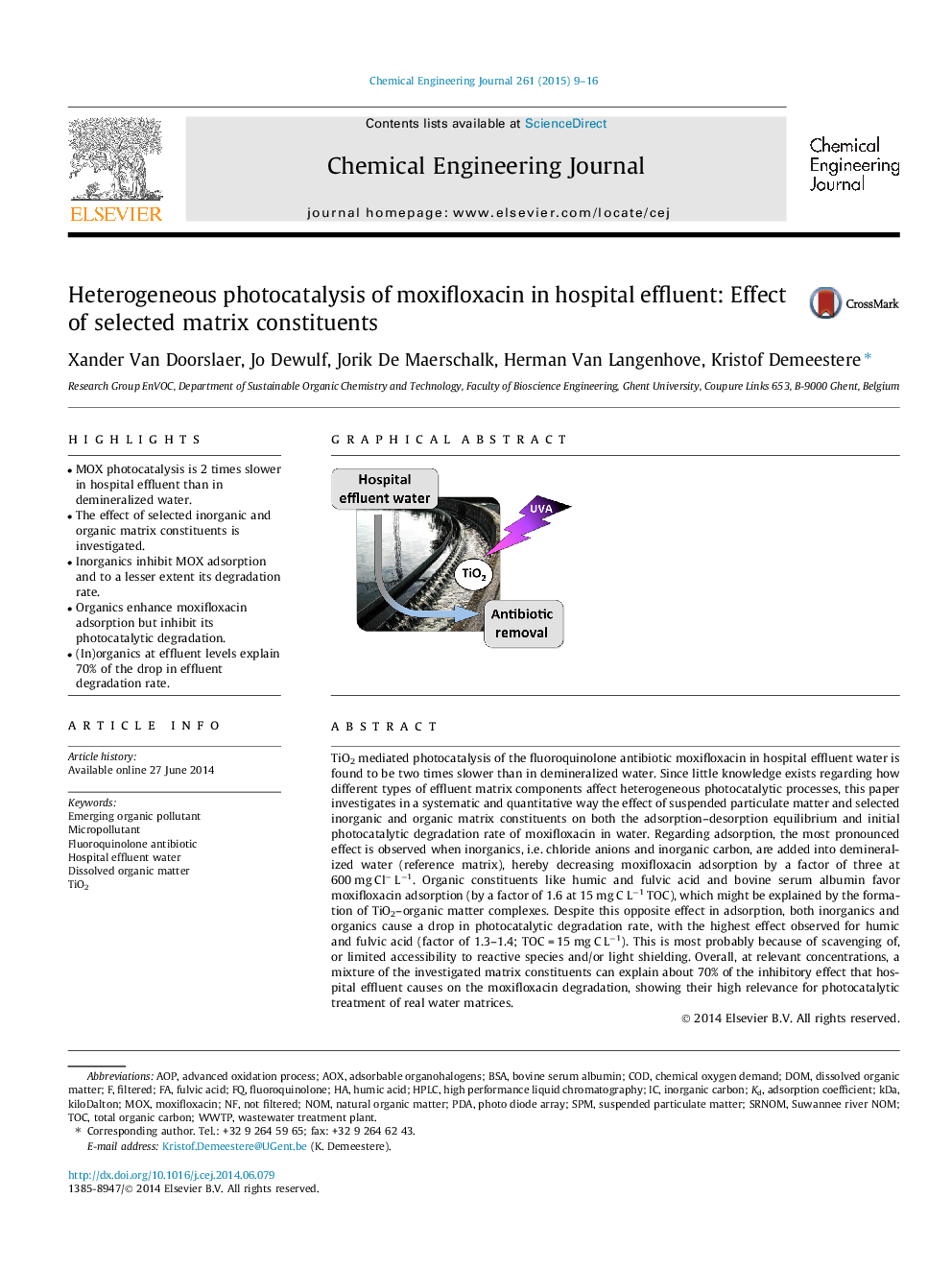| کد مقاله | کد نشریه | سال انتشار | مقاله انگلیسی | نسخه تمام متن |
|---|---|---|---|---|
| 146922 | 456381 | 2015 | 8 صفحه PDF | دانلود رایگان |
• MOX photocatalysis is 2 times slower in hospital effluent than in demineralized water.
• The effect of selected inorganic and organic matrix constituents is investigated.
• Inorganics inhibit MOX adsorption and to a lesser extent its degradation rate.
• Organics enhance moxifloxacin adsorption but inhibit its photocatalytic degradation.
• (In)organics at effluent levels explain 70% of the drop in effluent degradation rate.
TiO2 mediated photocatalysis of the fluoroquinolone antibiotic moxifloxacin in hospital effluent water is found to be two times slower than in demineralized water. Since little knowledge exists regarding how different types of effluent matrix components affect heterogeneous photocatalytic processes, this paper investigates in a systematic and quantitative way the effect of suspended particulate matter and selected inorganic and organic matrix constituents on both the adsorption–desorption equilibrium and initial photocatalytic degradation rate of moxifloxacin in water. Regarding adsorption, the most pronounced effect is observed when inorganics, i.e. chloride anions and inorganic carbon, are added into demineralized water (reference matrix), hereby decreasing moxifloxacin adsorption by a factor of three at 600 mg Cl− L−1. Organic constituents like humic and fulvic acid and bovine serum albumin favor moxifloxacin adsorption (by a factor of 1.6 at 15 mg C L−1 TOC), which might be explained by the formation of TiO2–organic matter complexes. Despite this opposite effect in adsorption, both inorganics and organics cause a drop in photocatalytic degradation rate, with the highest effect observed for humic and fulvic acid (factor of 1.3–1.4; TOC = 15 mg C L−1). This is most probably because of scavenging of, or limited accessibility to reactive species and/or light shielding. Overall, at relevant concentrations, a mixture of the investigated matrix constituents can explain about 70% of the inhibitory effect that hospital effluent causes on the moxifloxacin degradation, showing their high relevance for photocatalytic treatment of real water matrices.
Figure optionsDownload as PowerPoint slide
Journal: Chemical Engineering Journal - Volume 261, 1 February 2015, Pages 9–16
